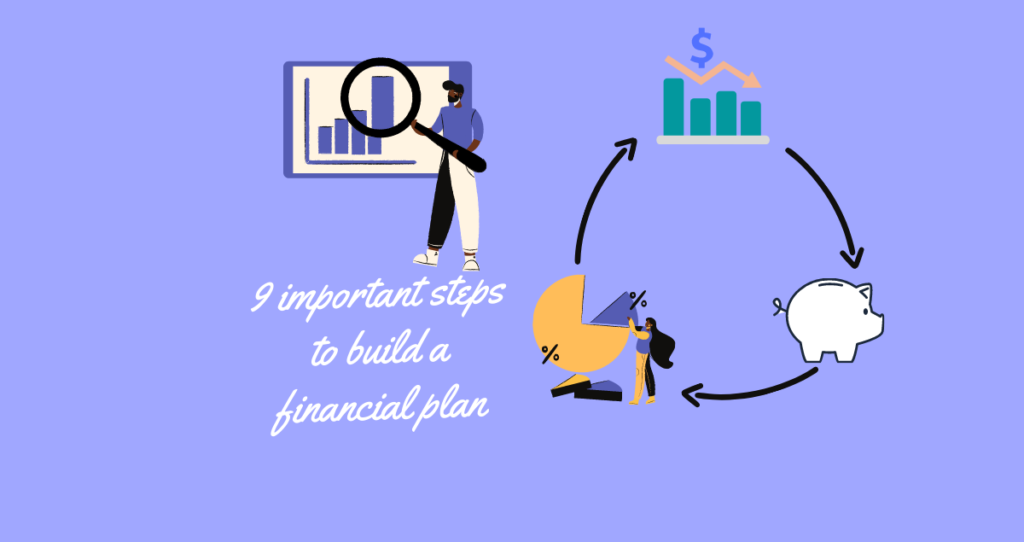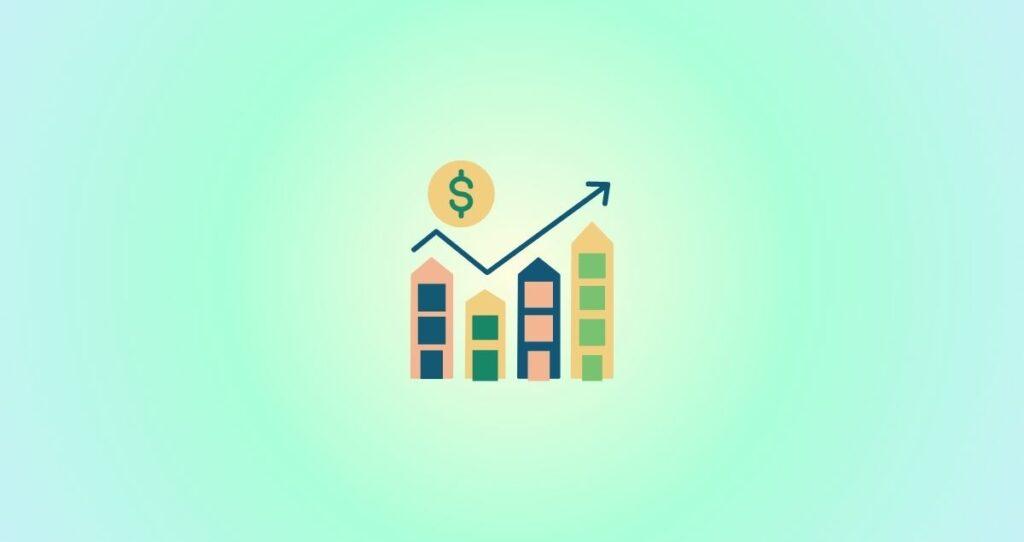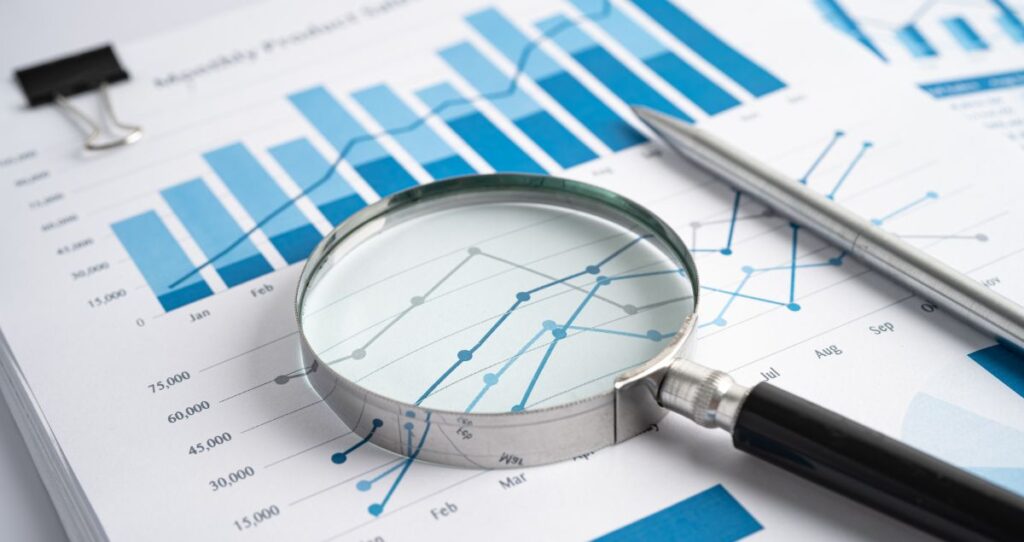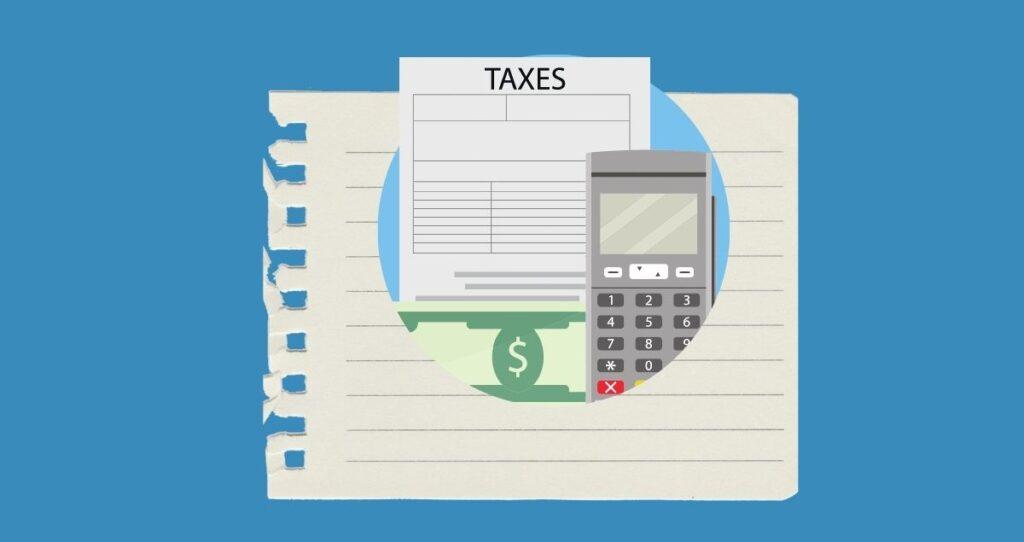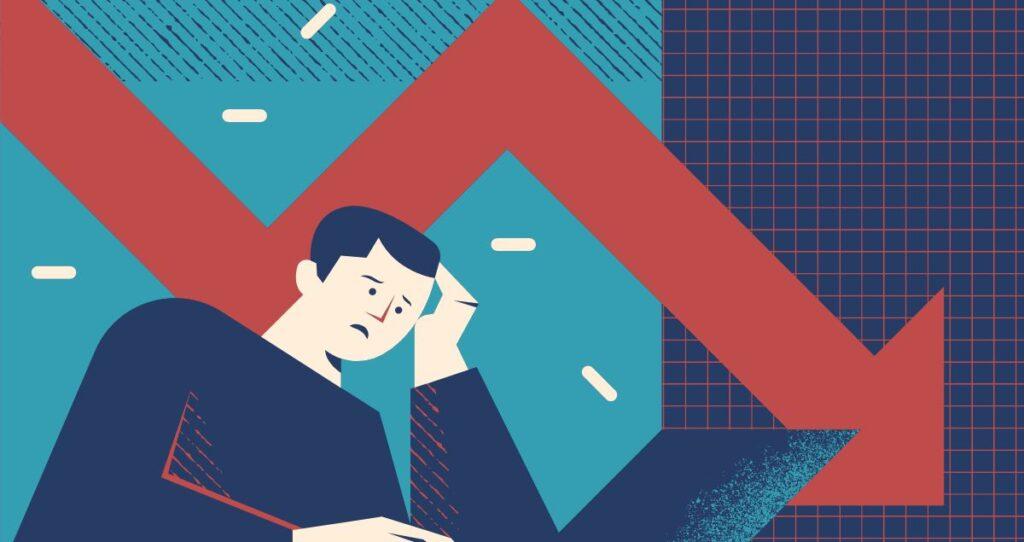Are you interested in financial planning? Having a financial plan is essential as it serves as a roadmap for your financial journey for managing your money, investing in your future, saving for retirement, and achieving your goals. With a financial plan, you identify your long-term goals and implement the necessary steps to achieving them. Whether you want to save for retirement, buy a house, or plan for a house purchase, establishing a financial plan will help you reach your financial goals.
While a financial advisor can help you draft a financial plan to reach your goals, you don’t need an advisor to manage your finances effectively. In this article, you will find all the steps to make a financial plan to manage your finances and plan for long-term financial goals strategically.
Without further ado, here are the steps to make a financial plan.
1. Start by establishing financial goals

Every financial plan must have goals. Whether you want to save for retirement, purchase a dream home, or start investing, you must start with goals in mind. These goals help determine what matters most to you and motivate you to do what is necessary.
Financial goals also help you track your progress and eliminate overspending temptations. For example, establishing a strategic plan to reach financial independence will be your first step if you want to be financially independent. Here are some of the most common goals you might consider in this step of financial planning.
Common goals to choose from
- Have enough money for retirement. Whether you want to retire early or want to have enough money in your retirement, making a financial plan will help you achieve this goal. No one wants to be broke in retirement, beg for food, or survive on government support when they can no longer afford to work. So, make sure that your financial plan also includes retirement savings.
- Travel. Do you want to fly around the world and appreciate God’s creation? Many people dream about traveling, having fun, relocating to foreign countries, etc. However, few individuals can realize this dream due to the lack of financial planning.
- Spending time with your loved ones. Building memories and spending time with loved ones are top hacks for a happy life. A financial plan will allow you to save money, budget well, invest in your future, and eventually reach financial independence. This will ultimately help you get the free time to spend with your loved ones.
- Sense of security. Money is one of the main things that worries people worldwide. Maybe you don’t want to travel, spend time with loved ones, or retire early. But being financially free will increase your sense of security. The thought that you can provide for yourself and others when necessary will make you feel invincible.
There are other financial planning goals that I did not include here, such as buying a house, saving for college, etc. These are incredible financial goals, and they differ depending on who you ask.
The question I want to ask you is:
- What are your financial goal(s)?
- Why do you want to create a financial plan in the first place?
- Can you still live your life without a financial plan?
All these questions will help you understand the true meaning of your life and guide you in choosing the most important financial goals that satisfy it. Your goals must be significant, as you will rely on them when things are not going well.
What do you do with your financial goal(s)?
After figuring out your financial goals, your next step is to write them down. Put your goals exactly where you can see daily to remind you what you are saving and working hard for. Put multiple copies where you spend most of your time. A friend drafted a financial plan and put it in the living room. This is where she spends most of her time. What about you?
Some people choose to put their financial goals in the bathroom so that they can see them every morning. Regardless of where you put your financial goals, it must be visible and accessible whenever you want it. After writing down your financial goals and putting them where you can easily see them, you will move to the next step.
The next step is one of the most essential steps in your financial planning. Read the following steps very carefully and practice as much as you can. I am not talking about rocket science. I am only talking about budgeting. Yes, budgeting is crucial when managing and planning your finances. Most people don’t get it. But you need to create a winning budget to succeed.
So, let’s move to the next step.
2. Track your money through budgeting
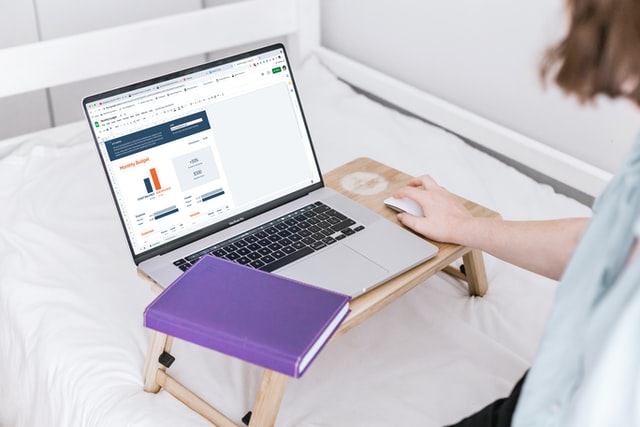
I slightly mentioned budgeting in the previous step. It was just an introduction. In this step, we will dive deeper and see what budgeting is about when making a financial plan.
You have probably heard about budgeting before. Maybe you learned it in school, read it in a book, or heard it from your friends. Whatever you learned is not that important. What is essential right now is that it is not the first time you have listened to about budgeting and what you will do about it. Well, even if it is the first time, don’t worry. We will cover some basics of budgeting.
So, what is budgeting?
Budgeting is allocating money to particular services or purposes in a budget. When your friends say that they are budgeting, what they mean is that they are creating a budget that helps them track their money and spend it wisely.
A budget is nothing other than a written estimation of your income, expenses, and savings. A reasonable budget should track all your incomes and costs weekly, monthly, and yearly. People create budgets differently. However, each budget should have the following six main parts.
- Income(s)
- Expenses
- The difference between income and expenses
- Projected/target expenses (this allows you to cut down on your expenses)
- Actual expenses
- Difference between projected expenses and actual expenses
This section will only focus on the first three parts of a budget. The last three parts will come into play when trying to cut down expenses and increase your savings. You will set the maximum amount you want to spend on each item and compare that with the actual expense at the end of the month.
For example, you want to spend $50 on monthly phone-related expenses. At the month’s end, you realize you spent $45. The difference between your target and actual expenses is $5. In other words, you beat your spending goal by $5. The difference between your target and actual expenses shows if you are going over budget or respecting the budget.
Let’s examine the main parts of a budget one by one.
Part 1. Incomes
Your income consists of every penny you make. Most people have just one income, which comes from their full-time jobs. However, other forms of income should not be ignored.
The following are examples of incomes you might have.
- Investments
- Gifts
- Allowances
- Wages
- Salaries
- Commission
- Interest
- Income from selling products
- Royalties
It is possible that you don’t have all these incomes, but that is OK. We will use the income you have. If you have multiple incomes, you must list them on your budget and calculate the total. For example, if your net income from your job is $20,000 and your total income from investments is $10,000, your total net income will be $30,000.
Some people use their gross incomes in their budget, which is one of many budgeting mistakes you must avoid. Always use your net income when making a budget.
When you make a budget using gross income, you are technically using the money that is not yours. You are using tax money, which must go to the government. Including tax money in your budget will negatively impact the accuracy and practicality of your budget.
Part 2. Expenses
The second part of budgeting is to write down all your expenses. When it comes to expenses, you should add up everything you spend on. Most people consider rent, insurance, car payments, and food costs and forget everything else.
Your expenses run much deeper than this. What about your phone services, Netflix subscriptions, gym memberships, dining out, medications, etc? All these and many more are part of your expenses.
To make it easy for you, everything that costs you money is an expense. The following is a list of expenses that most people have. Yours could be more or less depending on your lifestyle.
- Mortgage payments
- Rent
- Food expenses (grocery shopping, dining out, food giveaways, etc)
- Car expenses (gas, insurance, maintenance, loan payments, interest, etc)
- Phone expenses (data, minutes, movies, and app subscriptions)
- Shopping (clothes, shoes, and related items)
- Entertainment (movie, streaming services, apps, newspaper subscriptions, video games, etc.)
- Internet/TV
- Kids’ toys and related expenses
- Miscellaneous
You are probably not going to have all these expenses. For example, if you have a rent payment, it is unlikely that you will have a mortgage payment simultaneously. You can have both if, for example, you are a landlord and own multiple properties. Also, you will not have kids’ expenses if you are single and have no children.
What you will do now is write down everything that costs you money. Write them down in one column in budgeting software such as MS Excel and calculate your total expenses.
Part 3. Calculate the difference between incomes and expenses
Part 1 and Part 2 showed you how much you make and how much you spend every month. Now, I want you to go ahead and calculate the difference between the two numbers. That is, you subtract your total expense from your total net income.
What did you find? You should come to one of the following conclusions.
- The difference between your income and expense is positive. This means you are saving money every month. In other words, you live below your means.
- The difference is $0. You are not saving anything if your income and expenses differ from $0. If unforeseen expenses, such as an emergency, you will have a rough time coping with them.
- The difference between your income and expenses is negative. If this is the case, you are spending more money than you make. In other words, you are living above your means and, therefore, need to take immediate action to turn your situation around.
Whether saving money or not, you will still move forward from here. Financial decisions you have made in the past no longer matter. What matters is what you are going to do from here. The main goal for creating this budget is to help you save money by avoiding unnecessary expenses, which is a critical step in financial planning.
3. Increase your savings
Did you get surprised by how much you make compared to what you save? I can’t blame you. The first time I created a budget, I thought I was working only to give my money away. I was not saving anything at all.
My financial situation improved after making a financial plan that allowed me to save more money. I have compiled this financial plan guide to help you improve your life just like it saved mine.
In this section, I will show you how a budget you created will help you save more money.
There are many ways to increase your savings, but reducing your expenses is the easiest and smartest way.
This point brings us back to the budget you just started creating. Now, you only have what you make and where it is spent. The next step in creating a financial plan is to increase your savings by reducing expenses.
That is, we will see how you can reduce your spending on every expense. For example, if you spend $500 monthly on groceries, you can reduce it to $300. In this case, you will save $200 on groceries monthly (assuming you can spend only $300).
In this example,
- Target expense = $300 (4th part in your budget)
- Actual expense = $300 (5th part in your budget)
- Difference = $300-$300 = $0 (6th in your budget)
That $0 means that you have met your goals. The key point is that you used to spend $500 on groceries, but now only $300. This translates to $200 being saved every month.
Apply this technique to all of your expenses and maximize your savings.
Keep in mind that some expenses cannot be reduced right away. For example, you cannot just cut down your rent before the end of your lease term. If you are spending a lot of money on rent, consider moving into a much cheaper apartment/house at the end of the lease instead of renewing the same lease.
Saving Tips. Increase your savings by eliminating your wants.
Just because you have listed all your expenses, it does not mean they are essential. Some of your monthly expenses are there because you feel like you want them. These expenses are known as wants. The truth is you will lose nothing if these expenses are eliminated. For example, if you have Netflix, Hulu, Disney, HBO, and Amazon Prime, you can keep only one and cancel the others. These expenses are unnecessary; you will lose nothing if they are eliminated.
Look into your list of expenses, eliminate everything considered a want, or cut back on them. Once these are gone, you will move to manage how much you spend on needs. A need is anything in your budget you can’t live without. For example, you cannot survive without food. But you don’t need to pay the highest price for food, clothes, or drinks. Start buying what you need at the lowest prices possible. Sticking to generic brands is a great way to spend less money on needs.
4. Create an emergency fund

You have created a budget and increased your savings. So, what will you do with the money you are saving? Some people put their savings under the mattress or in a jar. Others put their savings in a checking account or savings account.
So, what is the right way to use the money you are saving?
The next most important thing to do on your financial plan is to create an emergency fund. No financial plan is complete without an emergency fund.
An emergency fund is the money you put aside to help you cope with unforeseen expenses.
What would you do if you got laid off for six months and had nothing saved? Remember, you just lost your job, but all your expenses remain. You still have rent to pay or mortgage payments to worry about. You will still need food, drink, use your phone, etc. How are you going to survive?
This is why you need an emergency fund. You need to have money accessible anytime to save you when things are not looking right.
Your emergency fund should cover at least 3 to 6 months of your expenses saved.
A financial plan aims to help you stay out of trouble for as long as possible and hopefully become financially independent. So, an emergency fund will keep you out of trouble.
Related: 4 ways to save for an emergency fund fast
5. Have a plan to pay off your debts
The next step in creating a financial plan is having a debt management strategy. Millions of people are in debt, and making meaningful financial progress for them is becoming almost impossible. Getting rid of your debt is critical to gaining control of your finances.
Not only will you live a miserable life due to debt, but the people you leave behind will inherit your debt. Nothing good comes out of debt unless you are investing.
You are probably saying that debt is good because I was able to buy my brand-new car using car loans. My question is: Who benefits from the debt you took out? Is it you, the dealership, and the bank giving you the money?
If you have debt already, it is time to start paying it off instead of accumulating more.
Achieving financial independence won’t be easy without getting rid of your debt. When you owe no money, you will start reaping the benefits of a financial plan and the freedom that comes with it.
Assuming that you have debt already, how will you pay it off?
I recommend paying off your debt, first with the most expensive debt. That is right. You are probably saying: How do I know the most expensive debt? Before I answer this question, we will start by looking into common debts most people have.
Common debts
- Mortgages
- Student loans
- Personal loans
- Car loans
- Credit cards debt
These are common debts that are holding most people down. According to debt.org, the US consumer debt is $14.6T and is shared among 340 million people. To summarize this statistic, you can safely say that almost every American has debt. You have a car loan if you don’t have credit card debts. Those without car loans, student loans, or mortgages have other forms of loans.
What is an expensive debt?
I define an expensive debt as a debt that will grow over time if you do not take action fast or one that costs you a ton of money in interest compared to others. For example, even if you have a $300,000 mortgage, your $30,000 in credit card debts could be more expensive than this mortgage.
This is because credit cards have the highest interest rate, known as the annual percentage rate (APR), in the lending industry. More importantly, this debt is compounded, making it grow exponentially over time. Your mortgage, on the other hand, does not grow over time. It goes down as you pay it off every month.
Make a serious plan that will help you pay off your debt faster. Get a second job if you must. Paying off your debt is a very crucial step you must take in your financial planning. Why would you worry about investing money if the interest charges on your debts take away your return on investment (ROI)? Know your priorities and make educated financial decisions.
The following articles can guide you through paying off some of your debts.
- How to pay off debt? 11 Tips you can use
- Struggling with debt? This is why people struggle with debt
- How to pay off credit card debt
6. Start your retirment accounts
At this point, you have put a plan in place to help you save money, manage your expenses, save for emergency funds, and pay off debt. Your next step to complete this financial plan is to work on your retirement. That is right. Retirement planning is essential when putting together a financial plan.
Why is retirement planning essential?
Think about this scenario. You are super strong and feel invincible. The hard truth is that everything will change one day. Your health will deteriorate, and you will not work anymore.
The catch is your expenses will still be there. Your living expenses, food, medical expenses, etc., will be covered. You will not have extra active income, but your costs and many more will be there.
How do you think you will finance these expenses? I don’t think you are planning to live on the streets, eat nothing, drink nothing, and avoid hospital when you are sick. The only way to survive in retirement is to have enough money saved for your retirement.
Everything you are doing right now, the countless hours you work, and your decisions all come to a straightforward element: Retirement planning. Most people never consider retirement planning when making a financial plan until it is too late. The good news is that you don’t have to be like everyone else. You don’t have to leave your precious future life to chance.
Your financial plan should include your retirement plan.
What is a retirement plan?
A retirement plan is nothing other than an estimate of how much money you will need and how your money will be spent. The plan should also include risk assessments as you will not work during retirement.
Before you retire, you must have a certain amount of money. This money will include your assets, income-generating investments, and retirement accounts. Every dollar you have will be added together to determine how much you will have.
A clever way to save for retirement is to have assets that generate enough income to cover all your expenses. This will allow you to live off your earnings without touching the principal.
Retirment accounts to start with
The essential and most crucial retirement accounts are your 401(k) plan and individual retirement account(IRA). A 401k is an account your employer provides where contributions to the plan directly come from your paycheck through payroll deductions. Your employer matches your contribution at a certain percentage, boosting your account faster.
An IRA is also essential as it helps you maximize your retirement savings and benefits. These accounts have tax advantages and can help you reach your retirement target faster. You don’t have a 401(k) plan? No problem. Check out this guide to save for retirement without a 401(k) plan.
7. Save to invest
We discussed saving options and retirement accounts in the previous sections when making a financial plan that works. The money you save or put in your retirement accounts should be invested to maximize your returns. You should always put your money to work instead of keeping it in your accounts. Your retirement account is not a savings account. It is an investing account designed for retirement.
Investing your money will help in two ways.
- Protection against inflation. Inflation is the rate at which a currency loses its value due to increased prices of goods and services. This is a simple definition of inflation. In other words, inflation will reduce the value of your money over time. For example, according to The People History, an average new car cost $2,752 in 1960. The exact amount of money would not buy you a car in today’s economy. Investing your money in investments that yield higher than the inflation rate will protect your money from losing its value.
- Investments help you reach financial independence faster. The money invested will give you a return. This return is what will help you grow your portfolio. For example, if you have bought dividend-paying stocks and chose to reinvest your dividends, your portfolio will grow faster. This is because you will be earning dividends on the principal amount and dividends you reinvested.
A successful financial plan should have a solid investment plan that maximizes your returns and protects you from significant losses. As always, the best investment is the one that ensures the protection of the principal and gives you a return at the same time.
The world of investing can be intimidating. If you are unsure how to invest money, work with an investment advisor. An advisor will guide you with the proper guidance you need, help you build a portfolio that fits your needs, and keep your mind at ease when things are not looking good.
The following articles will help you get started with investing.
- Where to invest money: An Investment Guide
- How to invest money: An investment guide
- How much money should I invest?
- 6 Financial mistakes to avoid at all costs
- How to increase your net worth
- Day trading for beginners
8. Write a will and have plans for wealth transfer
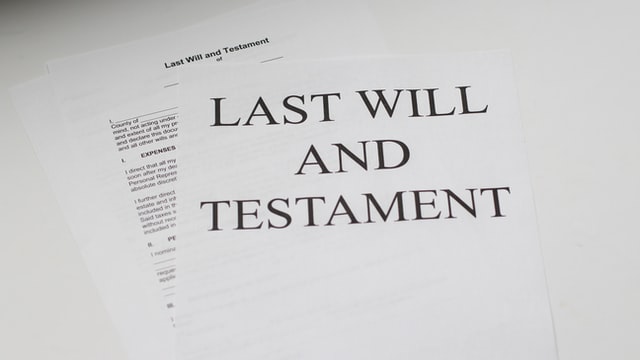
A good financial plan must include a will and the wealth transfer process. I am sorry to put it this way. You will not live forever. One day, you will depart and go to your creator. The bad news is that you will leave all your accumulated wealth and possessions behind.
What do you think will happen to your wealth after you are gone? This is where the will and wealth transfer will come in.
You must decide who will take over your wealth ahead of time.
Specifying how your wealth and all assets will be distributed in your will is critical. You should make it clear who gets what and what percentages. All your assets should be allocated to people based on your desire. Without a will, your loved ones could have trouble sharing what you left behind.
On top of family conflicts, some of your money could end up in government possessions or be liquidated to distribute to everyone who claims rights to it correctly.
9. Track your progress
The last step in your financial plan is to track your progress. Just because you decided to invest in an aggressive portfolio does not mean you will continue to keep it the same 30 years later. Sometimes, you want to adjust your portfolio to meet your financial goals.
Young people choose aggressive investments and change them to less aggressive as they age. This is because it is easy to take risks when you are young. As you approach your retirement, the choices you make should be carefully selected, and make choices that minimize risks.
You should constantly evaluate how well you are doing and ensure you are on the right track.
